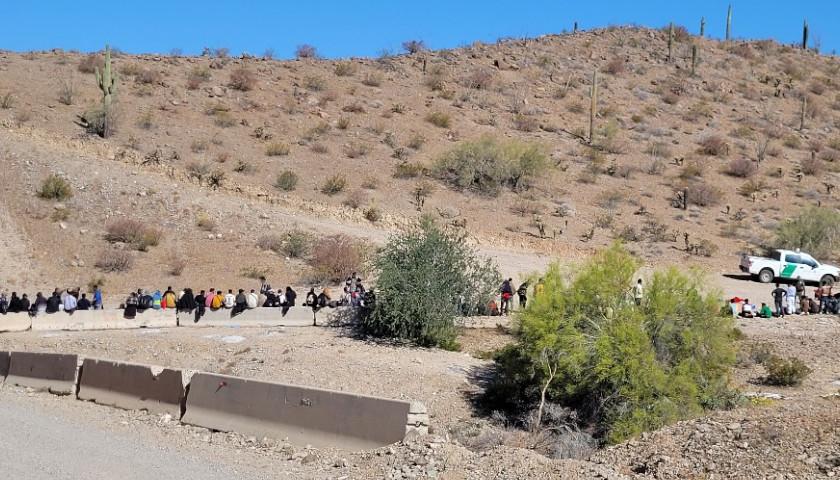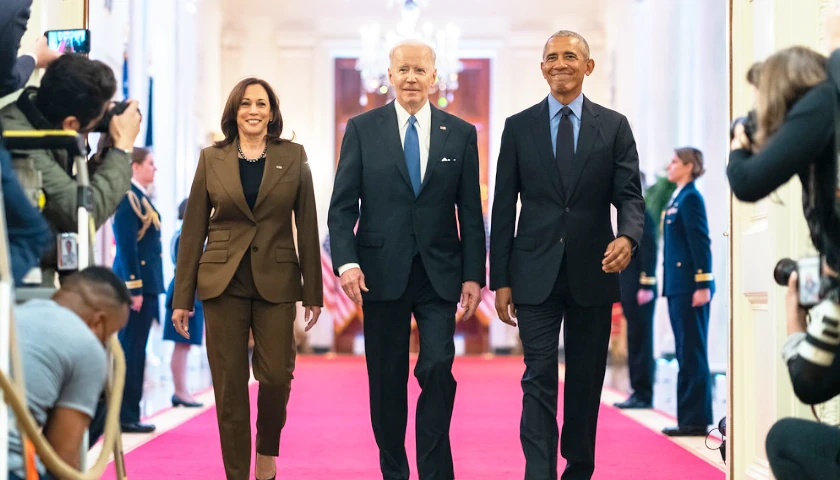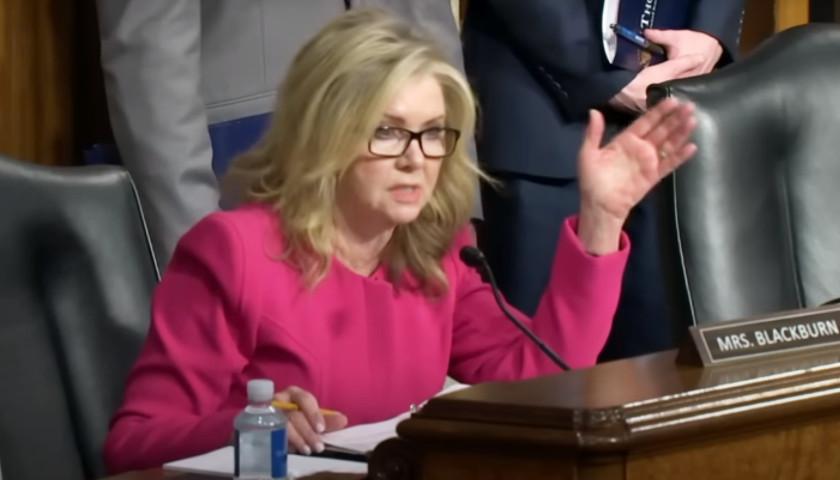by James Varney
In New York City, if the newcomers aren’t put up at the luxury cruise terminal that served the QE2, they could get $700-a-night midtown hotel accommodations with iconic Manhattan views. In Chicago, they found themselves whisked to suburban lodgings. In Denver, officials refer to them discreetly as “guests” and you needn’t bother inquiring about their inns or addresses.
The people enjoying these free digs aren’t privacy-conscious jet-setters, but the secrecy surrounding them might be comparable: They’re some of the millions of migrants who have illegally crossed into the U.S. since the Biden administration relaxed most border controls.
No one knows exactly how many people have poured across the southwestern U.S. border since President Biden took office, or where they’ve gone since. The official number of encounters by Customs and Border Patrol stands at 5.2 million people, logged over the last two full federal fiscal years and fiscal 2023 through March. But that number is imprecise because it includes repeat encounters with the same people and omits the many who slipped into the country unnoticed by border agents.
Under President Biden, the U.S. smashed past the 200,000 monthly encounters mark for the first time in July 2021 and it has repeatedly topped that record in the months since. By comparison, in fiscal 2020, which ended a month before Biden’s defeat of President Trump, the U.S. averaged 38,174 monthly encounters at the border, according to CBP figures.
Because of an official lack of transparency, all those people and the circumstances by which they have arrived and remained have made it hard to take stock of the historic influx. Through midnight flights and buses from the border to far-flung locales, the administration has made it difficult to identify where the migrants are now living and receiving services. Also unclear are the costs associated with the arrivals.
But flares have been sent up – especially over immigrant sanctuary cities like New York, Denver and Chicago, which have long promised to house migrants. While those cities are providing housing and other services for a small fraction of the recent migrants, the costs are significant for these budget-strapped metropolises.
Denver plans to spend $20 million in the first six months of this year to provide housing to migrants. Officials say this works out to between $800 and $1,000 per week per person.
In January the state of Illinois turned down Chicago’s request for more funds, saying it had already spent close to $120 million on its “asylum seeker emergency response” – or roughly $33,000 per migrant.
New York City Mayor Eric Adams has asked for more than $500 million in federal aid, while pegging the city’s spending at between $2 billion and $3 billion.
Other data points of the opaque costs of Biden-era illegal immigration include Massachusetts’ estimate that it will need $28 million to launch a program to provide driver’s licenses to undocumented residents. The state is seeking a share of the omnibus spending bill passed by Democrats in December 2022 when they controlled both houses of Congress, which included $800 million for cities grappling with the influx.
These numbers are incomplete in part because it is hard to separate the added cost of recent migrants from costs for the millions of undocumented immigrants who were in the country before the recent surge.
A March study by the conservative Federation for American Immigration Reform estimates that, after accounting for taxes paid by undocumented migrants, they cost taxpayers over $150 billion per year – a 30% increase since 2017.
Yet FAIR acknowledges the problem of fixing costs has become more difficult, given the record-breaking numbers of illegal crossers in the past two and a half years and efforts by some government agencies to mask their spending.
“We often had to grapple with a paucity of easily accessible official data,” the report notes. “Many state and federal entities do not publish detailed data that they collect, making it difficult to reliably separate illegal aliens from citizens of lawful immigrants. We have also encountered cases where the current administration has revoked or restricted documents published by previous administrations in order to reduce the visibility of data which shines a negative light on their immigration policy agenda.”
Those totals also involve far more than simple food and board. To arrive at its staggering sum, FAIR includes estimates of the costs in education, health care and law enforcement.
“The irony is not only are these sanctuary jurisdictions turning to Washington with their hands out, but that they still refuse to join with governors like Greg Abbott and Ron DeSantis in demanding that the federal government take decisive steps to stanch the influx of new migrants,” FAIR spokesman Ira Mehlman told RealClearInvestigations, referring to the Republican chief executives of Texas and Florida, respectively. “The obvious hypocrisy of declaring yourself a sanctuary jurisdiction while complaining about the costs and burdens associated with it are undeniable.”
Groups that favor more relaxed border security measures, such as the Coalition for Humane Immigrant Rights and the American Immigration Council, did not respond to RCI’s request for comment; the liberal Brookings Institution declined to comment.
Cities housing many migrants have a hard time estimating costs. New York Mayor Adams has asked for more than $500 million in federal aid, while pegging the city’s spending one time at $2 billion and another time at $3 billion. Those are the sorts of bills New York has racked up putting what they call “asylum seekers” or “migrants” in hotels.
And Adams, whose requests sometimes include the claim “we are all in this together,” wants to spend even more. This month, he floated the idea of paying college tuition for illegal immigrants if they attend New York state schools outside the city.
Using Adams’ own number of some 40,000 illegal immigrants that New York City has foot the bills for, it means taxpayers are spending roughly $150,000 per person to host new arrivals. In March, City Hall scaled back its count of the number of its immigrants  to 12,700, which meant the taxpayers’ were spending nearly $5 million a day to take care of them, according to a New York Post analysis.
The Office of the New York City Public Advocate, which helps immigrants navigate the benefits available to them, did not respond to multiple requests for comment. A spokeswoman for Adams declined to address questions about spending, pointing instead to various links the city maintains for immigrants and noting the city has expanded a New York County Supreme Court decision in 1981 regarding shelter for homeless people to cover immigrants.
Whatever the current official number of illegal immigrants New York is dealing with it is but a fraction of those that have poured into various Texas communities along the border.
Officials at El Paso’s City Hall, one of the ground zeroes in the illegal immigration crush, did not respond to phone calls and emails seeking comment on its spending. But Gov. Abbott said his Operation Lone Star, launched in March 2021, has “allocated more than $4 billion to do the federal government’s job and secure the border,” Abbott’s spokesman Andrew Mahaleris said.
It was Abbott who began busing illegal immigrants to some of the sanctuary cities that declare themselves so welcoming, such as New York, Denver and Chicago.
“Texas began busing migrants to sanctuary cities last April to provide relief to our overrun and overwhelmed border communities,” Mahaleris said. “Mayors Adams, [Muriel] Bowser and [Lori] Lightfoot were all too happy to tout their sanctuary city statuses until Texas bused over 16,900 migrants, collectively, to their self-declared sanctuary. Instead of complaining about dealing with a fraction of the border crisis Texas communities see every day, these hypocrites should call on President Biden to take immediate action to secure the border – something the president continues failing to do.”
Lightfoot, departing as mayor of Chicago after her defeat in February, first turned to Illinois for millions to help the Windy City cope with its several thousand illegal immigrants Texas provided. In January, however, the state turned her down, saying it had already spent close to $120 million on its “asylum seeker emergency response.”
That response came last September when Illinois Democratic Gov. J.B. Pritzker issued an “emergency disaster proclamation.” His proclamation and the words of other state leaders presented a schizophrenic picture in which they portray Illinois as a “welcoming beacon of hope” and complain they weren’t given “official advance warning.”
Most of the money Illinois spent – more than $61.5 million, or roughly $31,000 per immigrant – went to contracts with organizations or staff “who provided on site case management and other services at multiple locations.”
Illinois dropped another $8 million on “interim housing,” nearly $4 million on “health screenings for asylum seekers, and more than $29 million on “hotel, transportation and housing costs,” according to their breakdown.
Nowhere did Pritzker or Lightfoot question the wisdom of the Biden administration ‘s border policies, and there was no indication they understood the burdens that had been put on border cities and states. Instead, the unmistakable message was that if illegal immigrants were going to be sent where the “welcoming beacon” shone, other people should pay for it.
“They can say all that is for free, but now they’re finding out they can’t have a welfare society and an open border,” said Lora Reis, the director of the Border Security and Immigration Center at the conservative Heritage Foundation.
Denver held a budget “transparency and equity” meeting earlier this month at which Chief Financial Officer Margaret Danuser said the city will have spent between $17 million and $20 million on housing and other services for between 5,000 and 6,000 illegal immigrants between Dec. 2022 and this June. The city hoped to get federal taxpayers to reimburse it for $2.8 million, and a Colorado state fund for another $3.5 million.
Those figures show Denver spent about the same as Chicago at roughly $33,000 per immigrant, costs that are still far below New York City’s.
“None of these sanctuary mayors or governors have ever asked for a secure border. It was always just, ‘Feds, give us money!’” said Reis.
– – –
James Varney is a writer for RealClearInvestigations.
Photo “Illegal Immigrants” by John Modlin.





